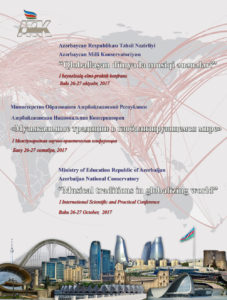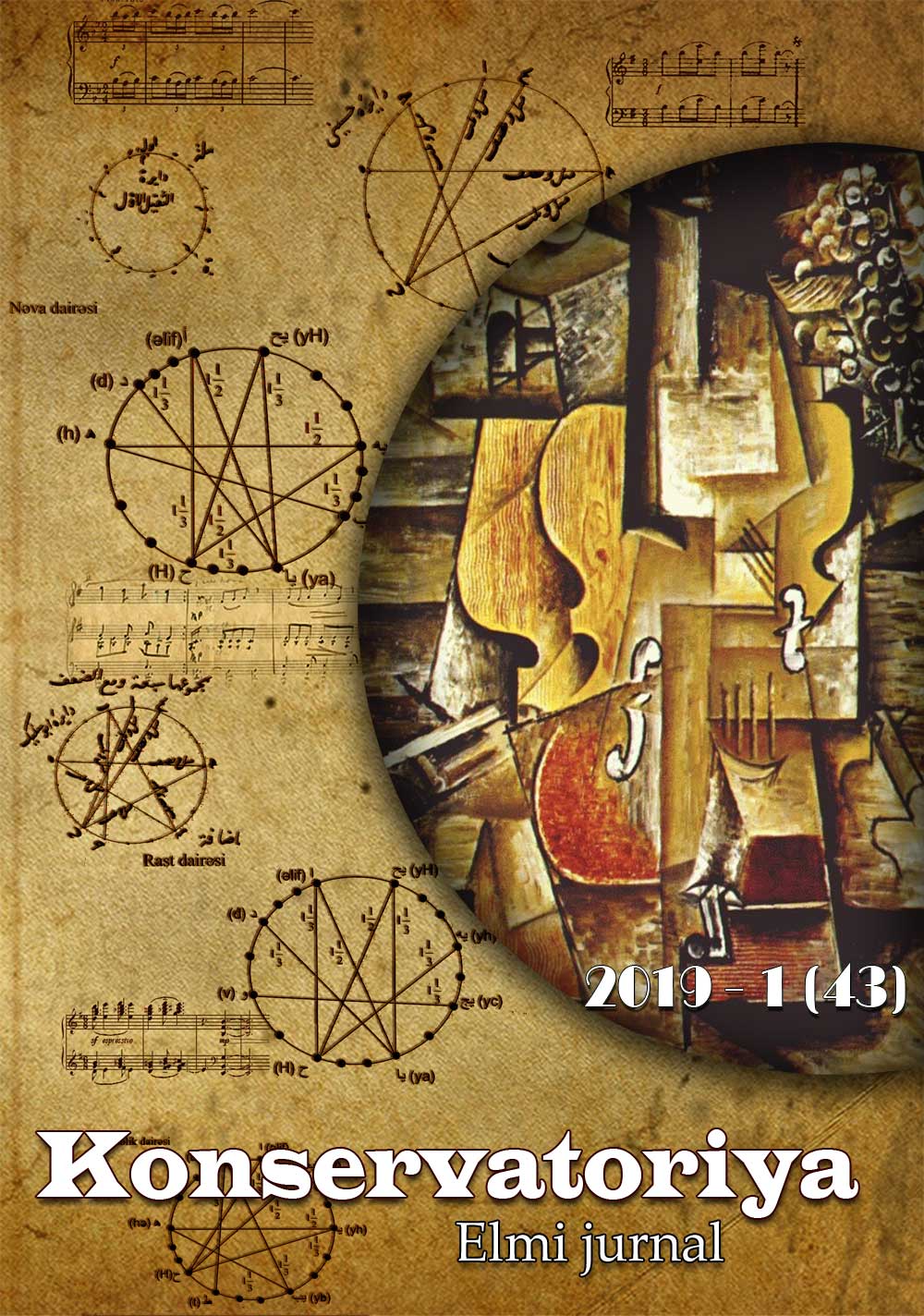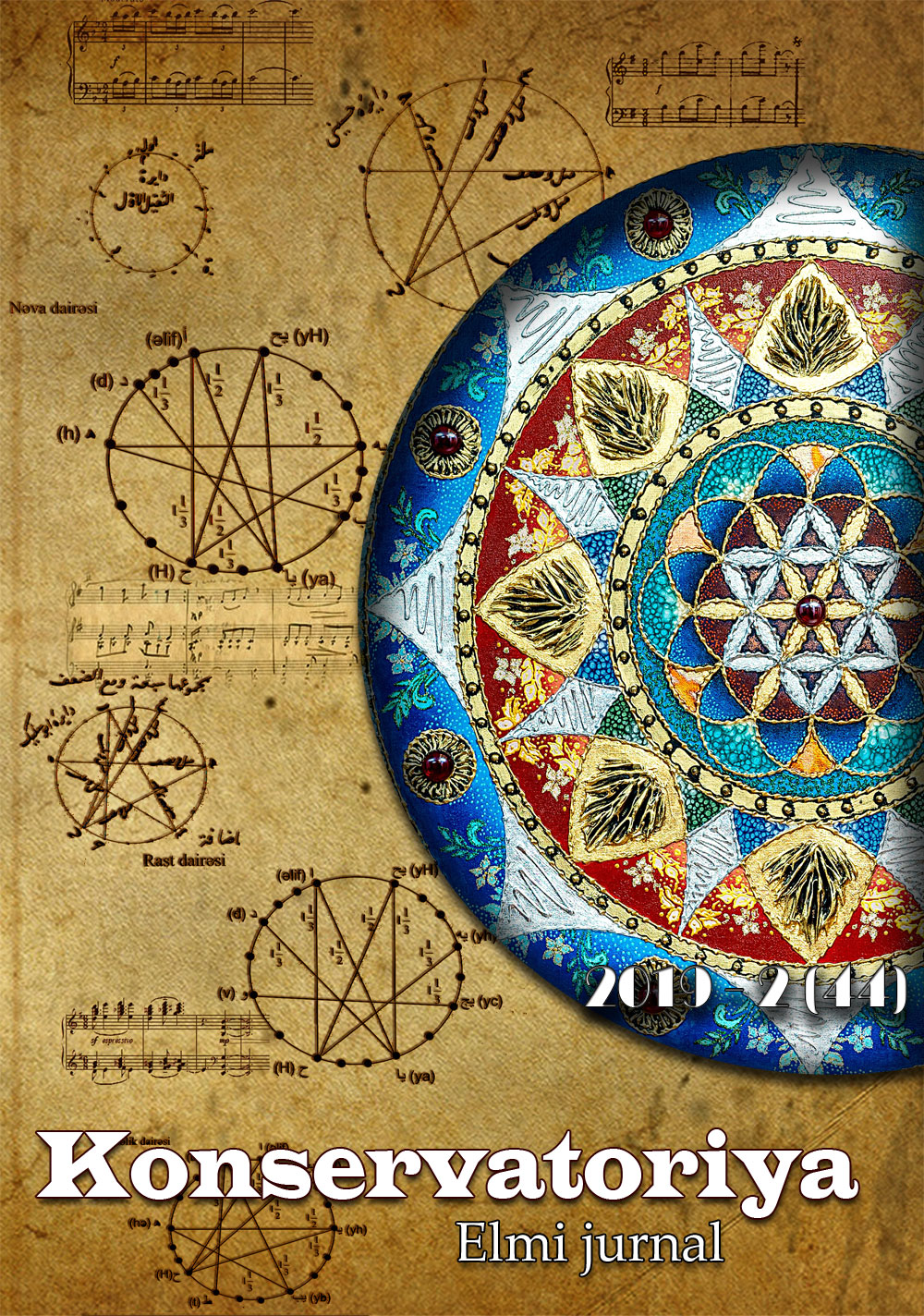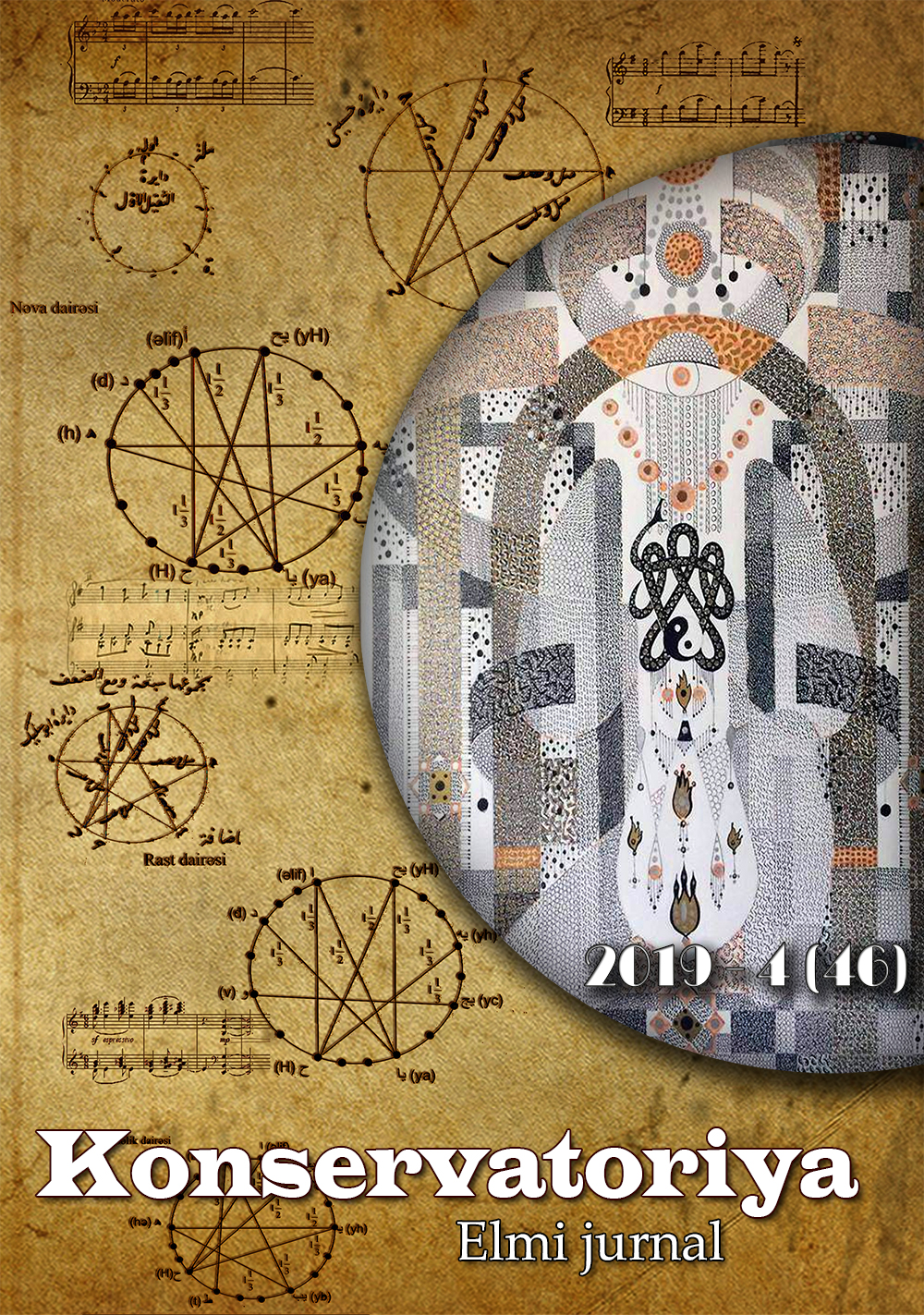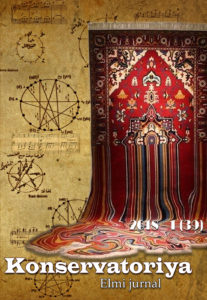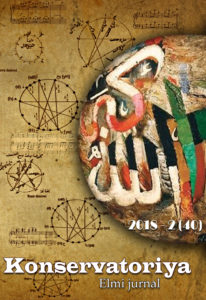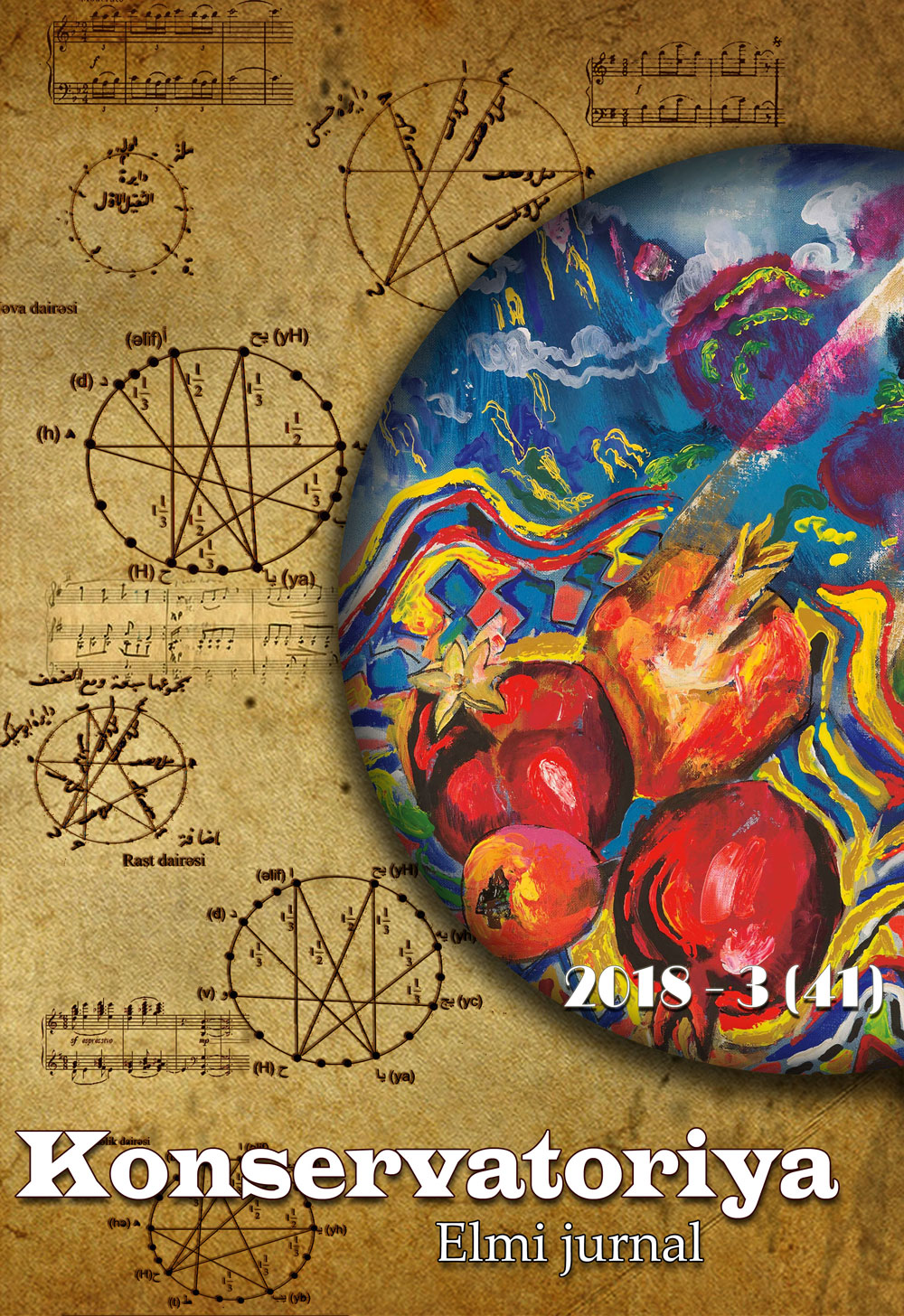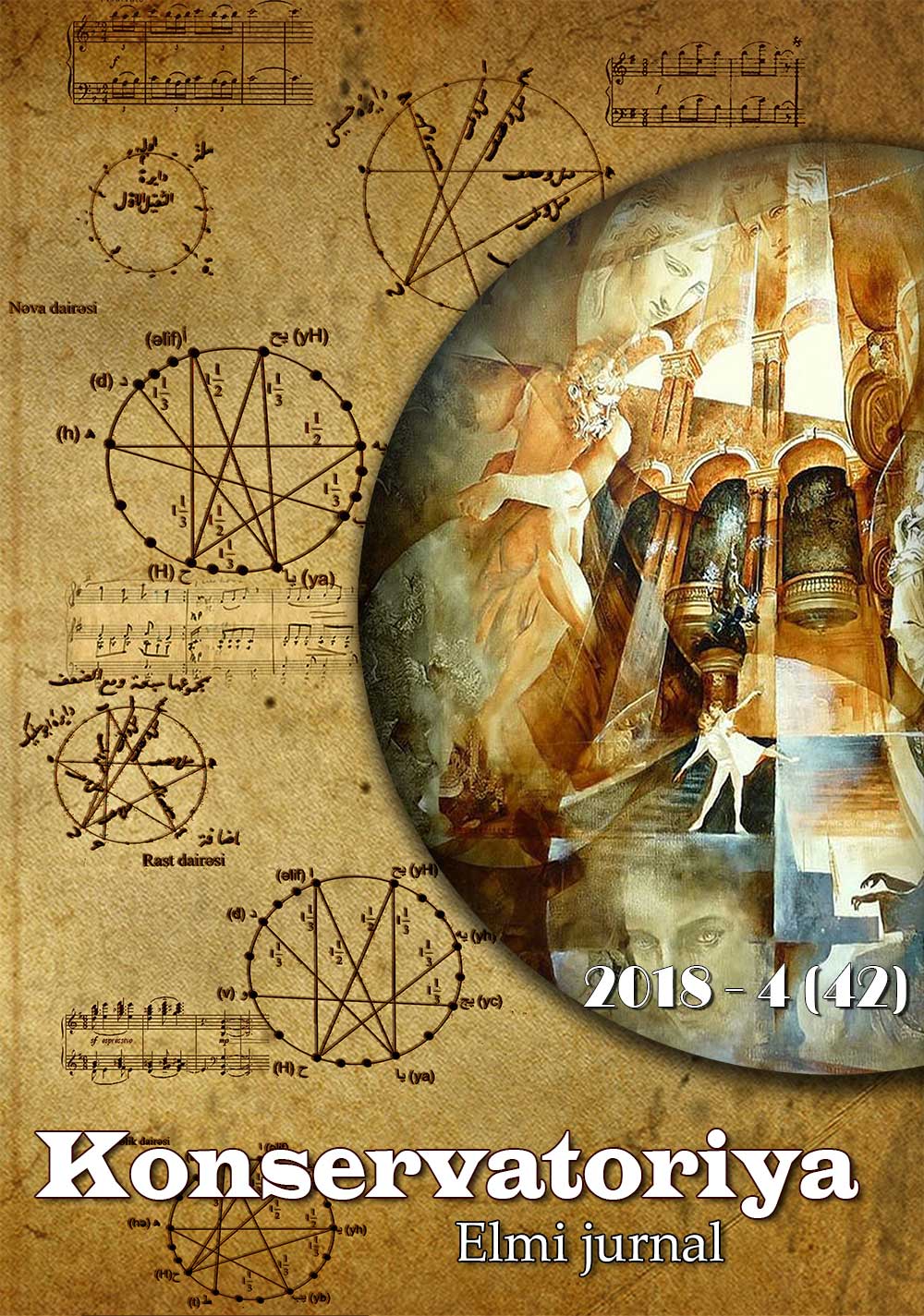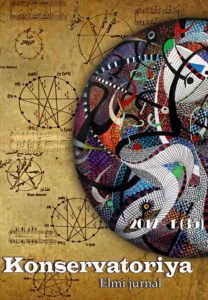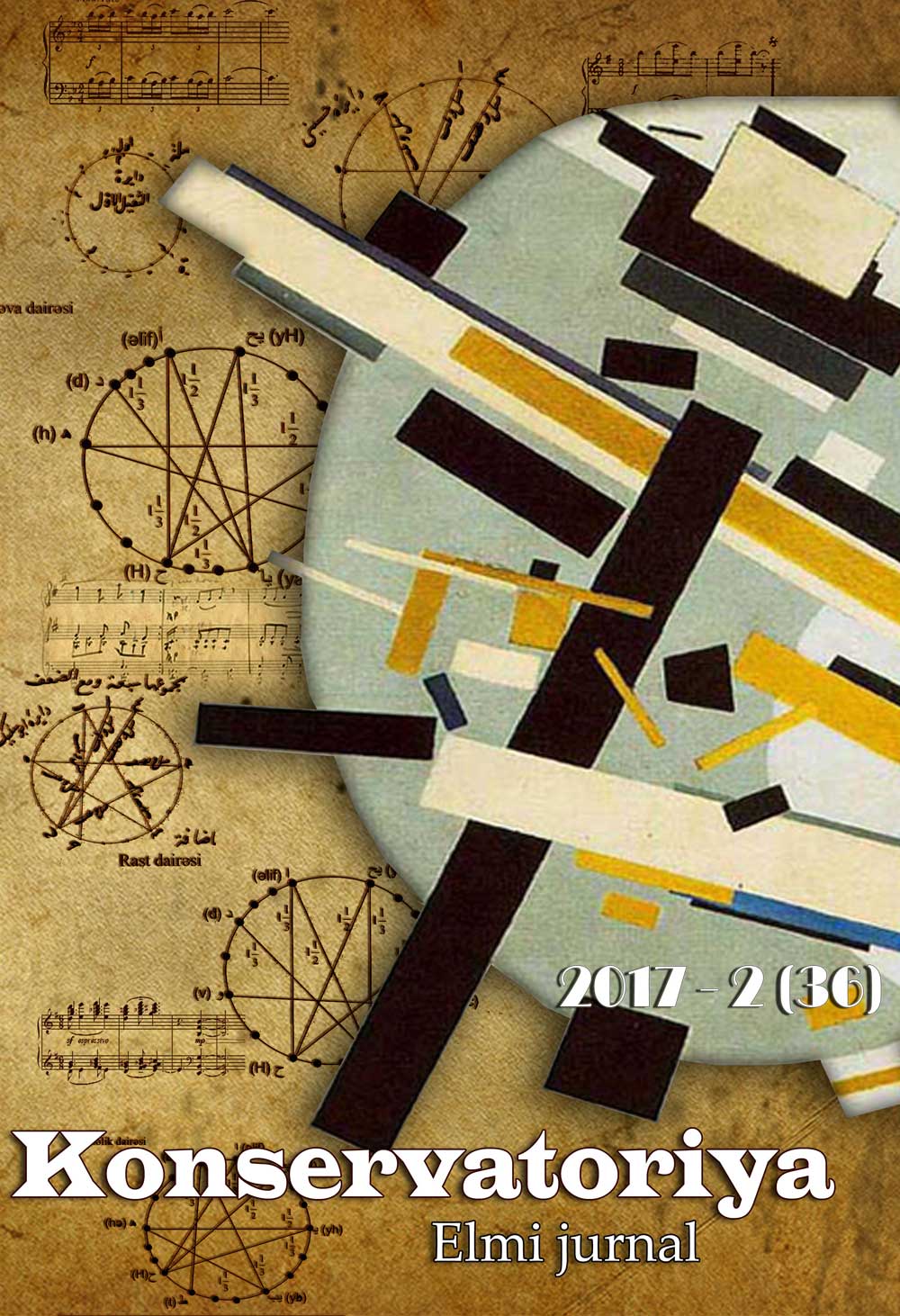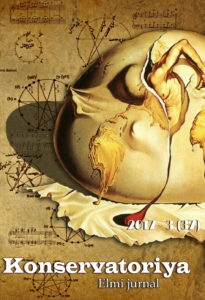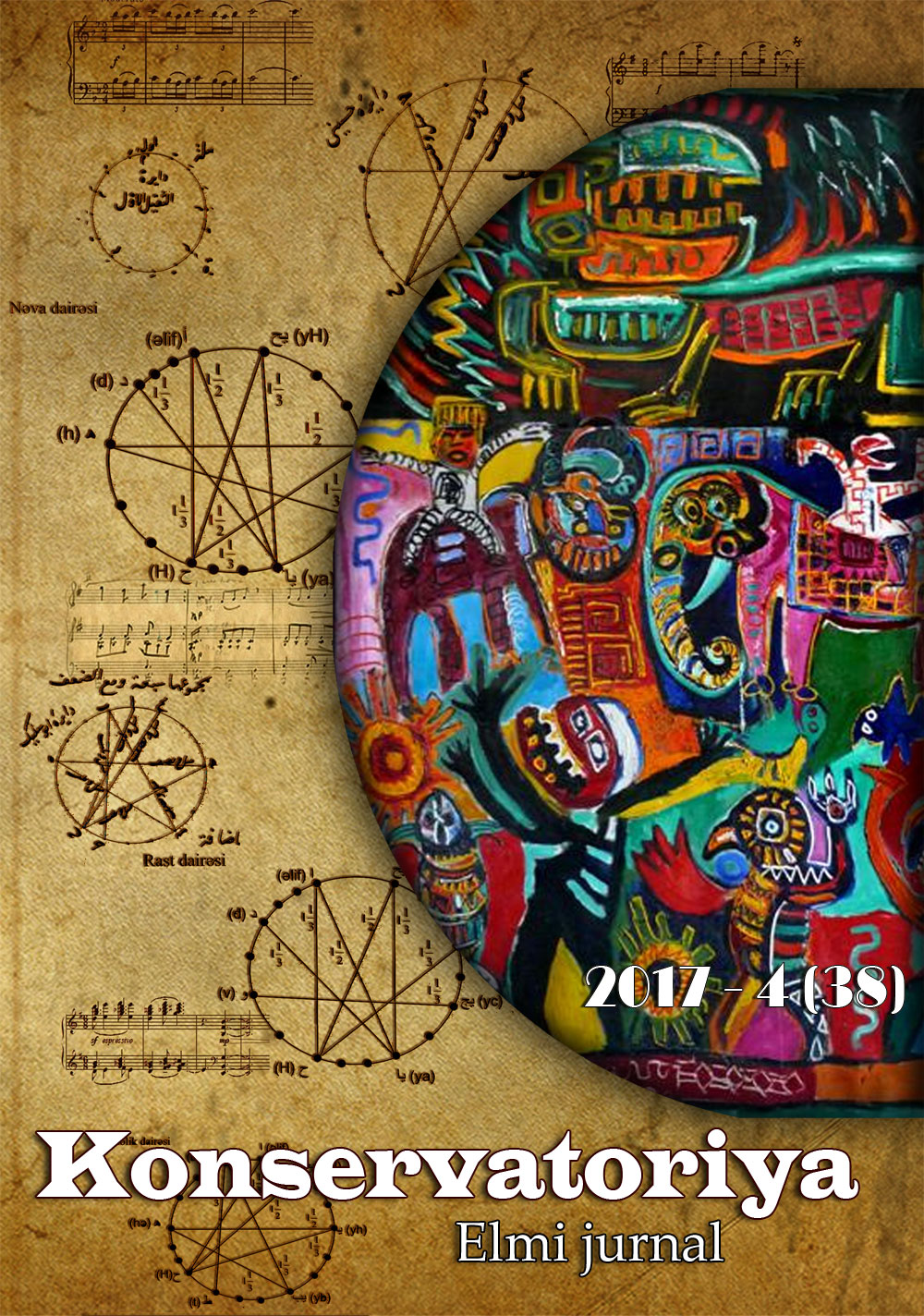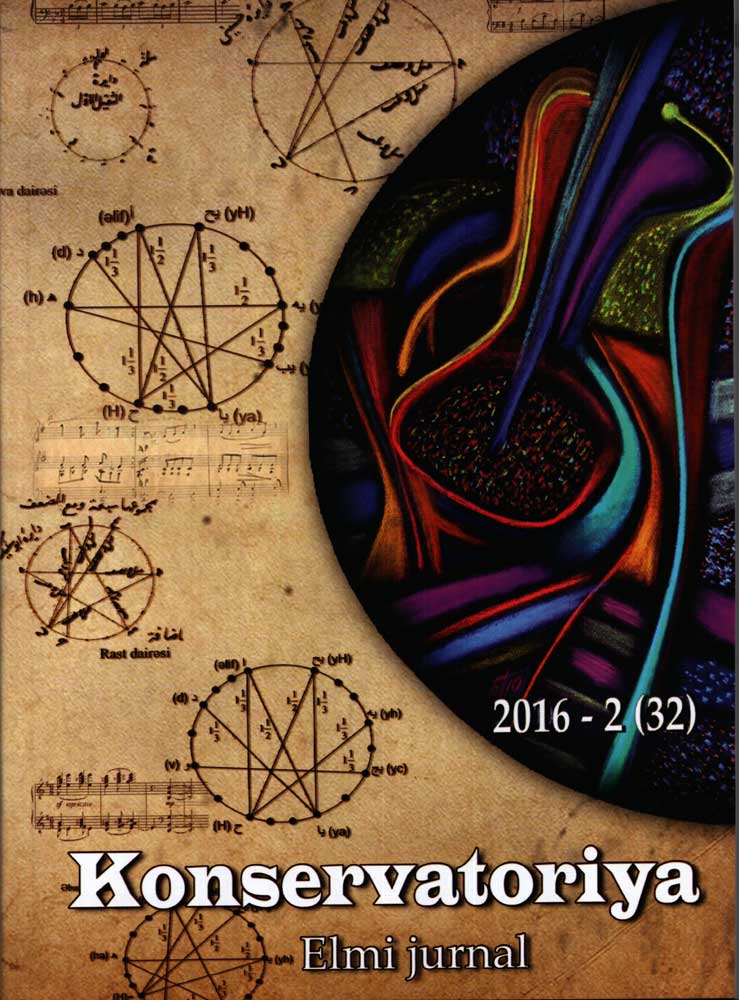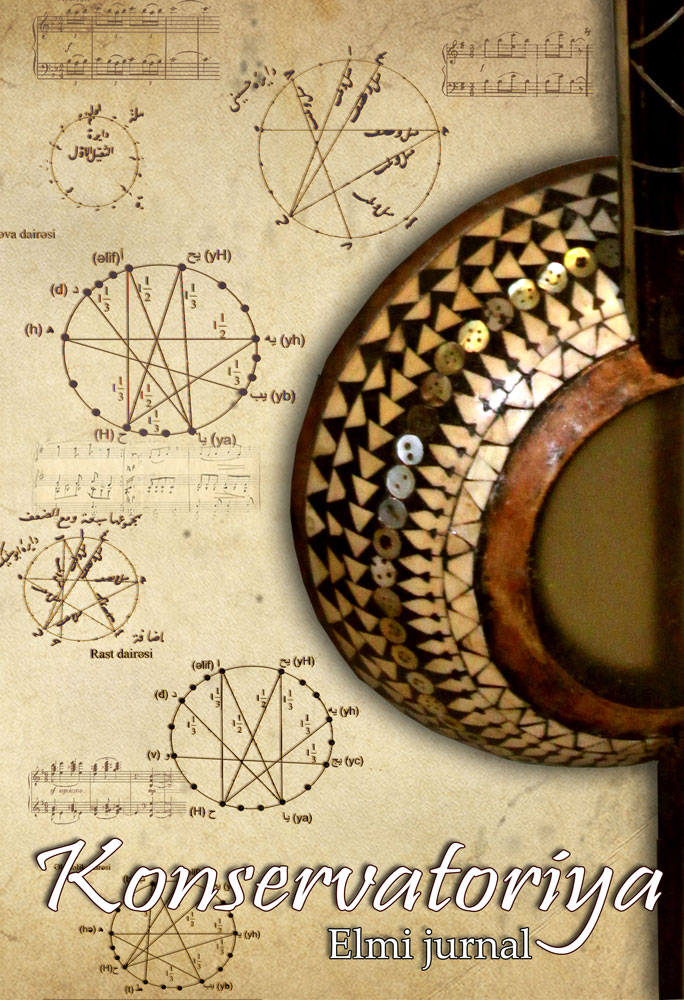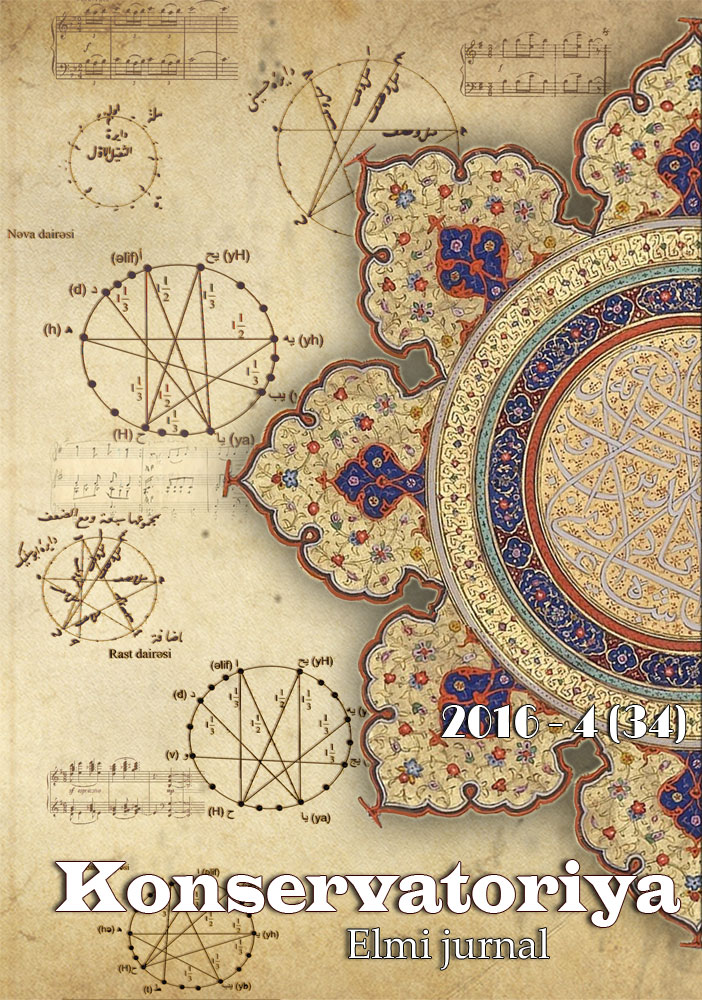“Leyli və Məcnun” muğam operasında Məcnun rolunu ifa edən görkəmli xanəndələrin səslərinin akustik təhlili
AZƏRBAYCAN MİLLİ KONSERVATORİYASI
“KONSERVATORİYA» 2022 №1 (54)
Aleksandriya SULTAN VON BRÜSELDORFF
AMK-nın doktorantı,
Elmi rəhbər: AMK-nın professoru,
sənətşünaslıq üzrə fəlsəfə doktoru Fəttah Xalıqzadə
Ünvan: Yasamal rayonu, Ələsgər Ələkbərov 7
E-mail: alexandriasultan@outlook.com
“LEYLİ VƏ MƏCNUN” MUĞAM OPERASINDA MƏCNUN ROLUNU İFA EDƏN GÖRKƏMLİ XANƏNDƏLƏRİN SƏSLƏRİNİN AKUSTİK TƏHLİLİ
Xülasə: Məqalədə “Leyli və Məcnun” Azərbaycan muğam operasından Məcnun rolunu ifa edən görkəmli xanəndələrin səslərinin uzunmüddətli orta spektr (Long-Term Average Specrum, LTAS) vasitəsilə akustik təhlili yer alıb. Tədqiqat subyektlərimiz Məcnun rolunun ifaçıları, görkəmli xanəndələr – Azərbaycan SSR xalq artistləri Əbülfət Əliyev və Arif Babayev, Azərbaycan Respublikasının xalq artistləri Alim Qasımov və Mənsum İbrahimovdur. Araşdırmada hər bir subyektin səsinə dair tezlik spektrləri üzrə enerjinin paylanmasında ümumi amilləri müəyyən etmək üçün LTAS əyriləri qurulmuş, xanəndə səsləri arasında akustik dəyişkənliyi aşkar etmək üçün LTAS əyriləri diaqram şəklində üst-üstə qoyulmuş, habelə muğam və opera janrlarında səslər arasındakı akustik fərqləri göstərmək üçün xanəndələrin və opera ifaçısı, tenor, Azər-baycan Respublikasının xalq artisti Samir Cəfərovun səsinə dair LTAS əyriləri də üst-üstə qoyularaq müqayisə edilmişdir. Məqalə həmçinin bütün subyektlərdə, opera ifaçısı da daxil olmaqla, səs formantının (singer’s formant) varlığını və ya yoxluğunu əks etdirən uzunmüddətli orta spektr (LTAS) təhlilini əhatə edir. LTAS vasitəsilə akustik təhlil nəticəsində məlum oldu ki, vokal muğam materialının tonallığı, tessiturası və mətnindən asılı olaraq səs formantı həm aşağı registrdə – bəmdə, həm də yuxarı registrdə – zildə, bəzi musiqi parçalarında aşkar olunmuş, bəzilərində isə müşahidə edilməmişdir. Xanəndələrdən fərqli olaraq opera ifaçısı, Samir Cəfərovun ifa etdiyi bütün parçalarda səs formantı müşahidə edildi.
Açar sözlər: muğam, xanəndə, akustik təhlil, LTAS, “Leyli və Məcnun” muğam operası, səs formantı (singer’s formant)
UOT:612.1/.8

ƏDƏBİYYAT:
- Çəmənli M. Məcnunun Məcnunu. Bakı: Təhsil Nəşriyyatı, 2010, s. 239
- Əliyeva L. Muğamın Məracı: Alim Qasımov sənətinin gizli çalarları haqqında düşüncələr. Bakı : Şərq-Qərb, 2017, s. 168
- Fərhadova S.M. Azərbaycan muğam-dəstgahının tarixi kökləri. B.: Azərbaycan Respublikasının Prezidenti yanında Elmin İnkişafı Fondu, 2018, 198 s.
Xarici dillərdə:
- Adams L.L. Who’s Afraid of the Market? Cultural Policy in Post-Soviet Uzbekistan // The Journal of Arts Management, Law and Society. 2000. № 30(1). p. 29-41
- Cleveland T. Acoustic properties of voice timbre types and their influence on voice classification. // The Journal of the Acoustical Society of America, 1977: (61); p.1622-1629
- Dmitriev L; Kiselev A. Relationship between the formant structure of different types of singing voices and the dimension of supraglottal cavities. // Folia Phoniatr (Basel). 1979: (31); p.238-241
- Doscher B. M. The Functional Unity of Singing Voice. Metuchen, N.J., Lanham, M.D. : Scarecrow Press, 1994, p. 331
- Fant G. Acoustic theory of speech production. The Hague: Mouton; 1960 p. 323
- Fineberg J. Guide to the Basic Concepts and Techniques of Spectral Music. // Contemporary Music Review, 2000, Vol. 19, Part 2, p. 81-113
- P. Acoustic studies of voice variation [Ph.D. thesis]. Jyväskylä, Finland: University of Jyväskylä; 1996 p. 148
- Kitzing P. LTAS criteria pertinent to the measurement of voice quality. // Journal of Phonetics, 1986:(14); p.477-482
- Löfqvist A. The long-time-average spectrum as a tool in voice research. // Journal of Phonetics, 1986:(14); p.471-475
- Löfqvist A; Mandersson B. Long-time average spectrum of speech and voice analysis. // Folia Phoniatr (Basel). 1987: (39); p.221-229
- Martin T. An Affirmative-Action Empire: Nations and Nationalism in the Soviet Union, 1923-1939. Ithaca, NY: Cornell University Press, 2001, p. 496
- McCoy S. J. Your Voice, an Inside View: Multimedia Voice Science and Pedagogy. Princeton, N.J.: Inside View Press, 2004, 2005, 2006, p. 182
- Miller D. G. Resonance in singing: voice building through acoustic feedback. Princeton, New Jersey, USA: Inside View Press, 2008:50 p. 130
- Miller R. The Structure of Singing: System and Art in Vocal Technique. New York: Schirmer Books, 1986, p.372
- Moradi N., Maroufi N., Bijankhan M. et al. Long-Term Average Spectra of Adult Iranian Speakers’ Voice. // Journal of Voice, 2014; 28 (3); p. 305-310
- Novak A., Dlouha O., Capkkova B., et al. Voice fatigue after theater performance in actors. // Folia Phoniatr (Basel). 1991:(43); p.74-78
- Peterson G.E., Barney H.L. Control methods used in a study of the vowels. // Journal of the Acoustical Society of America, , 1952, Vol. 24, p. 175-184
- Stowell D., Plumbley M. D. Characteristics of the beatboxing vocal style. Technical report C4DM-TR-08-01, Centre for Digital Music, Dep. of Electronic Engineering, Univ. of London, London, p. 1-4
- Sultan von Bruseldorff A. An acoustic analysis of bam and zil singing by Azerbaijan female mugham singers using the long-term average spectrum (LTAS) / conference proceedings of the I International Scientific and Practical Conference “Musical Traditions in Globalizing World”, Azerbaijan National Conservatory, Baku, Azerbaijan, 2017. full paper published on URL:http://konservatoriya.az/konfrans/2017.pdf 75-82
- Sundberg J. Articulatory interpretation of the “singing formant.” // The Journal of the Acoustical Society of America, 1974: (55); p.838-844
- Sundberg J. Level and center frequency of the singer’s formant. // Journal of Voice, 2001;15 (2): p.176-186
- Sundberg J. The Science of the Singing Voice. DeKalb, III. : Northern Illinois University Press, 1987, p. 216
- von Helmholtz, Ellis A. J. On the sensations of tone as a physiological basis for the theory of music. 3rd English ed. London; New York: Longmans, Green, 1895, p. 576
- Williams R.C. The Nationalization of Early Soviet Culture // Russian History. 1982. № 9 (2/3), p. 157–172
- Абасова Э., Касимов К. Узеир Гаджибеков – музыкант-публицист // Искусство Азербайджана. – Б.: Издательство Академии наук Азербайджанской ССР, 1968. – Т. XII. c. 5-20
- Агаева С.Х. О классификации звука и вокальном исполнительстве в трактатах Абдулгадира Мараги. / Материалы международной научной конференции «Мысль о музыке в авраамических традициях – 2019. Концепции звука & звучания с древнейших времен к XXI веку» (Москва, 6-7 ноября) /Отв. ред. Г.Б. Шамилли. – М.: Государственный институт искусствознания, 2019, 248 c.
- Стулова Г.П. Акустические основы вокальной методики: учебное пособие для студентов магистратуры музыкальных факультетов педагогических факультетов. Санкт-Петербург : Лань : Планета музыки, 2015, с. 121
- Шушинский Ф. Народные певцы и музыканты Азербайджана. М.: Советский композитор, 1979, 200 c.
Saytoqrafiya:
- Alim Qasımov və Mələkxanım Eyyubova – “Leyli və Məcnun” Operası https://www.youtube.com/watch?v=sRYFpX1VoSE (giriş, Mart 2021)
- Arif Babayev və Rübabə Muradova – “Leyli və Məcnun” Operası https://www.youtube.com/watch?v=8egCHIXxuBM (giriş, Aprel 2021)
- Dünya şöhrətli muğam ifaçısı Alim Qasımovun Paris Filarmoniyasında konserti olub https://mehribanaliyeva.preslib.az/media-2opt57hsxd.html
- Əbülfət Əliyev və Sara Qədimova – “Leyli və Məcnun” Operası 1956 https://www.youtube.com/watch?v=GkB736r-WZM (giriş, Aprel 2021)
- İncəsənət xadimlərinə Azərbaycan Respublikası Prezidentinin mükafatlarının verilməsi haqqında Azərbaycan Respublikası Prezidentinin Sərəncamı https://president.az/az/articles/view/55974
- İ.İbrahimovun “Şərəf” ordeni ilə təltif edilməsi haqqında Azərbaycan Respublikası Prezidentinin Sərəncamı https://president.az/az/articles/view/49759
- Mənsum İbrahimov Nəzakət Teymurova – “Leyli və Məcnun” Operası 2011 https://www.youtube.com/watch?v=Fx8kkTSzzM4 (giriş, May 2021)
- Muğam ifaçılığında Əbülfət Əliyev dəst-xətti https://medeniyyet.az/page/news /37077/Mugam-ifaciliginda-Ebulfet-Eliyev-destxetti.html
- Sultan von Bruseldorff A. An Acoustic analysis of bam and zil singing by female Azerbaijani mugham singers using the long term average spectrum (LTAS) // International Conference of Students of Systematic Musicology (SysMus14), Goldsmith University of London, UK, 2014. URL:https://journals.gold.ac.uk/index.php/sysmus14/article/view/225
- Десятилетие проекта «Шелковый путь» виолончелиста Йо-Йо Ма (На концертах в Северной Америке звучит музыка композиторов Азербайджана, Узбекистана и США) (недоступная ссылка). Государственный департамент США. Дата обращения: 18 июня 2010. Архивировано 19 августа 2011 года. URL:https://www.america.gov/st/arts-russian/2009/March/200903201349082 ECaganarA7819635.html
- Опера «Лейли и Меджнун» покорит США URL:http://www.1news.az/culture/20090228115852206.html
- Опера «Лейли и Меджнун» Электронная энциклопедия Узеира Гаджибекова. URL: http://uzeyirbook.musigi-dunya.az/ru/data.pl?id=374&lang=RU
Александрия Султан фон Брюсельдорфф
Докторант Азербайджанской национальной консерватории
АКУСТИЧЕСКИЙ АНАЛИЗ ГОЛОСОВ ВЫДАЮЩИХСЯ ХАНЕНДЕ,
ИСПОЛНЯЮЩИХ РОЛЬ МЕДЖНУНА ИЗ МУГАМНОЙ ОПЕРЫ
«ЛЕЙЛИ И МЕДЖНУН» У.ГАДЖИБЕЙЛИ
Резюме: В статье представлен акустический анализ голосов выдающихся ханенде, исполняющих роль Меджнуна из Азербайджанской национальной оперы «Лейли и Меджнун» У.Гаджибейли, с применением долгосрочного среднего спектра (LTAS). Объектами нашего исследования являются исполнители партии Межнуна — известные ханенде — народные артисты Азербайджанской ССР Абульфат Алиев и Ариф Бабаев, народные артисты Азербайджанской Республики Алим Гасымов и Мансум Ибрагимов. В ходе исследования были построены кривые LTAS для определения общих факторов в распределении энергии по частотным спектрам голоса каждого субъекта, кривые LTAS были наложены в виде диаграммы для выявления различий в акустических параметрах голосов ханенде. Кроме того, чтобы показать акустические различия между голосами исполнителей в мугамном и оперном жанрах, кривые LTAS голосов ханенде и оперного певца, тенора, народного артиста Азербайджанской Республики Самира Джафарова были также представлены в виде диаграммы. В статье также рассматривается анализ долгосрочного среднего спектра (LTAS), который отражает наличие или отсутствие певческой форманты (singer’s formant) у всех субъектов, в том числе у оперного певца. Акустический анализ с помощью LTAS показал, что в зависимости от тональности, тесситуры и лирики вокального мугамного материала в некоторых музыкальных отрывках как в нижнем регистре — баме, так и в верхнем регистре – зиле — певческая форманта выявлялась, а в некоторых — не выявлялась. В отличие от ханенде, певческая форманта была обнаружена во всех отрывках, исполненных оперным певцом Самиром Джафаровым.
Ключевые слова: мугам, ханенде, акустический анализ, LTAS, мугамная опера «Лейли и Меджнун», певческая форманта
Alexandria Sultan von Bruseldorff
Doctoral student of the Azerbaijan National Conservatory
ACOUSTIC ANALYSIS OF THE VOICES OF THE WORLD-RENOWNED KHANENDE PERFORMING THE ROLE OF MAJNUN FROM THE MUGAM-OPERA «LEYLI AND MAJNUN» U.HAJIBEYLI
Summary: The article presents an acoustic analysis of the voices of world-renowned mugham singers performing the role of Majnun from the Azerbaijan National Opera «Leyli and Majnun» U.Hajibeyli, using the long-term average spectrum (LTAS). The objects of our research are the performers of the role of Majnun, khanende, the world-famous people’s artists of the Azerbaijan SSR Abulfat Aliyev and Arif Babayev, people’s artists of the Azerbaijan Republic Alim Gasimov and Mansum Ibrahimov. In the course of the study, LTAS curves were built to determine the common factors in the distribution of energy across frequency spectra of the voice of each subject; the LTAS curves were superimposed in the form of a diagram to identify differences in the acoustic parameters of the khanende’s voices. In addition, to show the acoustic differences between the voices of performers in the mugham and opera genres, the LTAS curves of the voices of the khanende and the opera singer, tenor, people’s artist of the Azerbaijan Republic Samir Jafarov were also superimposed in the form of a diagram. The article also discusses the analysis of the long-term average spectrum (LTAS), which reflects the presence or absence of a singer’s formant in all subjects, including an opera singer. Acoustic analysis using LTAS showed that depending on the tonality, tessitura, and lyrics of the vocal mugham material, in some musical pieces, both in the lower register — bam, and in the upper register — zil, the singer’s formant was observed, and in some, it was not observed. Unlike the khanende, the singer’s formant was found in all excerpts performed by the opera singer Samir Jafarov.
Keywords: mugham, khanende, acoustic analysis, LTAS, mugham opera “Leyli and Majnun”, singer’s formant
Rəyçilər:
sənətşünaslıq üzrə fəlsəfə doktoru, professor Lalə Hüseynova
sənətşünaslıq üzrə fəlsəfə doktoru, professor Fəttah Xalıqzadə

